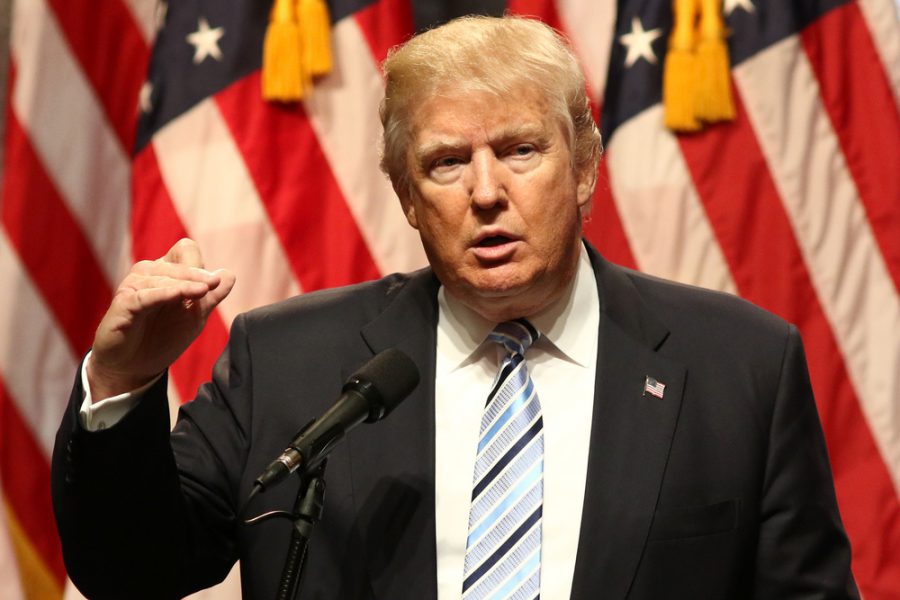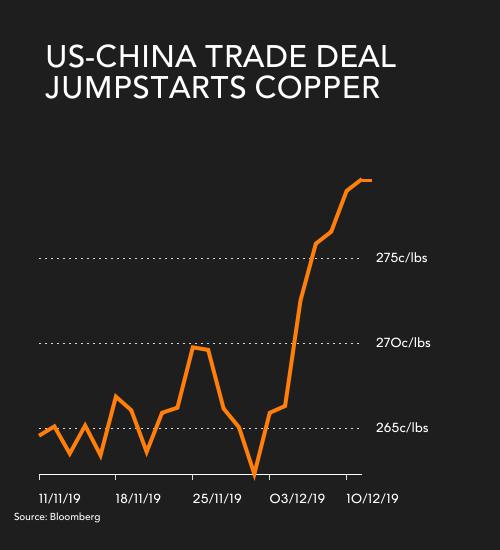
In after hours trading in New York, copper for delivery in March added to gains earlier in the day, hitting $2.8310 a pound ($6,240 a tonne), a 7-month high and up 8% over seven straight sessions of gains.
President Donald Trump signed off on a phase-one trade deal with China, averting the December 15 introduction of another wave of US tariffs on about $160 billion of consumer goods from the Asian nation, people familiar with the matter told Bloomberg.

China consumes half the world’s copper, and the dispute with the US has weighed on the market for more than a year. Given its widespread use in industry, construction, transport and power distribution, the metal is sensitive to broader economic conditions.
Trade data released at the start of this week showed the country’s imports of unwrought copper increased to the highest since September 2018. Shipment totalled 483,000 tonnes in November, nearly 6% higher than the same month last year.
For the first 11 months of 2019, imports of unwrought copper are still down 8.5% from a year earlier at 4.45 million tonnes. Last year China imported a record 5.3m tonnes of refined copper.
Copper stocks in warehouses in China have been declining since June and were at 245,500 tonnes at the end of last month, the lowest since at least June 2013, according to Refinitiv Eikon data.
China put in place a complete ban on certain types of scrap copper imports at the start of 2019 on top of a 25% tariff on imports from the United States, one of its main suppliers, instituted in August
Imports of copper concentrate continued to rise sharply, up 27% from a year ago to a new record of 2.16m tonnes last month. November cargoes boosted year-to-date volumes to 20.1 million tonnes, a gain of just over 10% compared to the first 11 months of 2018. Concentrate imports are already above the record set in 2018 of 19.7m tonnes.
China put in place a complete ban on certain types of scrap copper imports at the start of 2019 on top of a 25% tariff on imports from the United States, one of its main suppliers, instituted in August.
Smelter expansions have increased demand and competition for copper ore in China, with spot treatment and refining charges (TC/RCs) — paid to smelters to process copper concentrate into refined metal — falling sharply this year as a result.
RELATED: 4 charts that say this time the copper price surge could last
Comments
Jeremy Pelletier
On October 13, 2019, nearly 2,000 Asarco Groupo Mexico employees walked out of Asarco’s 5 copper mines and smelter, 4 of which is in Arizona and 1 is in Texas. After the company spent months stonewalling at the bargaining table—and recently even refused to meet—the seven unions at ASARCO voted to authorize a ULP strike. The company is demanding more concessions after years of deep cuts. Under its proposals, most workers would see no wage increases while their individual health insurance premiums more than double and their pensions freeze. The Asarco Employees need to stick together now more than ever on the picket lines.
This supply and demand are what is also making the price of copper go higher and higher. My hopes are that Asarco Sees they need to offer a fair contract agreement and allow their employees to get back to work soon before losing billions of more dollars while trying to save pennies.